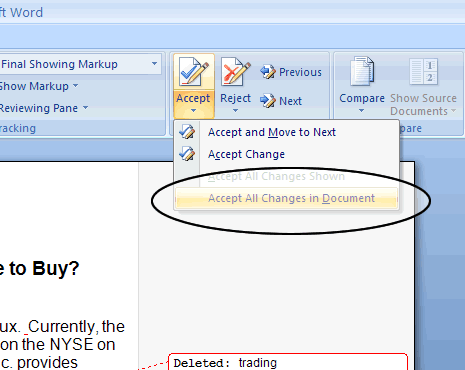

See more tips & tricks, including my recent (and growing) series on using Word Styles.Welcome to my redesigned and hopefully much less tedious software page. This was originally published in the August 2018 newsletter of Editors Victoria (link updated to IPEd archive, members only). Any of them would have helped me show my client that there were comments and edits that needed to be checked. So there are a few techniques for summarising comments in Word. It explains where the comment was inserted, but also doesn’t give line numbers.

(You can see I’m still running PerfectIt 3.) You simply choose ‘Compile text in comments’ from the Additional Tasks tests. PerfectItįor completeness, I’ll mention a fourth option, which is suitable if you just want a summary table of comments (but not insertions and deletions) and you use PerfectIt. I wasn’t after this myself, so I haven’t tested it, but you might like to give it a go.
#Track changes for word in mac free
There’s a free version as well as a paid version that allows you to customise some aspects. If you find the idea of using macros too daunting, you might like to know that DocTools also offers a Word add-in that will do the same job. I believe that Paul Beverley has similar macros (and also available for free). The table of comments extracted by the second macro doesn’t give line numbers (although it gives the word/s selected where the comment is located). I think the line numbers make it much more useful than the list produced in Word. Here’s an example of the table created by the first of those macros.

I don’t think this table is ideal it might still be hard to find where a comma was deleted or a dash inserted on a page. The result is a table showing the file name and insertions, deletions and comments (but not format changes) labelled by type and page number.

On my Mac, I find the option at File > Print and go to settings for Microsoft Word and select Print What: List of markup. In that drop-down menu, select List of Markup. On my PC, I go to File > Print and click on the arrow at Print All Pages. It turns out that Word lets you print out a list of tracked changes and comments – another case of finding really useful capabilities when you look further into Word’s menu options. I found four main techniques for producing a summary of edits: This applies in other scenarios too, even for people who are familiar with Track Changes. I used a clumsy work-around at the time, but being able to give them a summary of edits and comments would have been very useful. Maybe they were simply inexperienced with Track Changes. I wanted my client to see my tracked edits, but they seemed to not see the edits at all, even my comments. Since then, I’ve come across some solutions in Word too. A few months ago, I wrote about having trouble getting an author to see my tracked changes in Word (and showed a solution for that problem in PDFs).


 0 kommentar(er)
0 kommentar(er)
